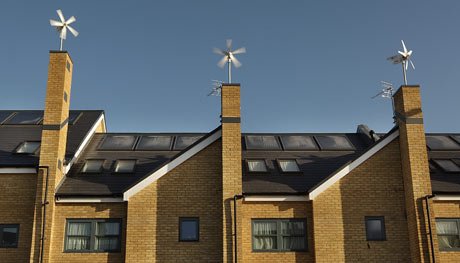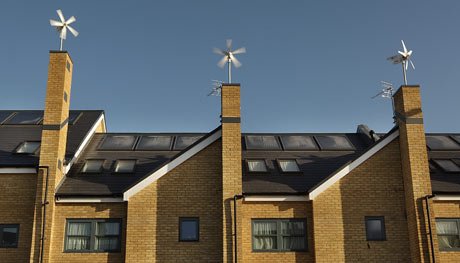The distributed solar industry has thrived in recent years with the availability of low-cost financing for small-scale installations, with more than 750,000 homes and businesses going solar and new projects being installed every two minutes according to the Solar Energy Industry Association. Distributed-scale wind power, on the other hand, has been less accessible.
Some companies are looking to change this, as demonstrated by last week’s announcement of a $200 million investment by Forum Equity Partners in United Wind; this capital will enable the company to expand its “WindLease” program, which offers residential, commercial, and agricultural property owners the ability to lease distributed-scale (up to 100 kW) wind turbines for 20-year terms. United Wind expects that Forum Equity’s investment will support more than 1,000 projects in the Northeast and Midwest.
Like solar, wind power is appealing because it provides electricity at a predictable and constant price, reduces dependence on fossil fuels, and does not emit greenhouse gases. On-site generation also offers the ability to lessen your dependence on the grid, a particularly important issue if you experience frequent outages or if you want to reduce your carbon footprint.
Another characteristic that solar and wind share is a significant upfront investment, though both resources can be financially competitive with grid power over the life of the asset. The economic viability of distributed resources is enhanced when your utility offers net metering (a process for crediting customers with the electricity they add to the grid), but long-term leasing programs are especially helpful.
The renewable energy industry is poised to experience a growth spurt due to the passage in late 2015 of the production tax credit (PTC), which for wind is 2.3 cents per kW-hour for projects that begin construction by the end of 2016, with annual 20 percent reductions for projects beginning construction through the end of 2019. Says Mike Garland, chairman of the American Wind Energy Associationand CEO of Pattern Energy Group Inc., the five-year PTC extension “will allow us to make more supply commitments and build more projects, creating more jobs.”
Distributed non-utility-scale wind can take many forms,* including:
- Schools: Small turbines, multi-megawatt turbines, and even a cluster of small turbines can be used to power schools with clean energy and provide economic benefits. School districts can take advantage of savings on energy bills and in some cases generate revenue. Wind projects provide a great educational opportunity for students.
- Residential: Small wind turbines can be used in residential settings to directly offset electricity usage using net metering, where power that is not used by the home is credited to the customer as it flows back on to the electricity system. Wind turbines used near homes are commonly in the 1- to 10-kW range but can be larger. They can be used to partially offset load or support a completely off-grid home. These turbines can sometimes be integrated with other components, such as photovoltaic systems and storage and power converters.
- Agriculture: Wind turbines can provide farms with low-cost electricity – an important economic boost and direct benefit for farmers. Regardless of turbine size, a farmer can plant crops right up to the base of the turbine, and livestock are free to graze around it.
- Community Wind: A community wind energy project is an asset owned by a local community. It is defined by an ownership model rather than by the application or size of the wind energy system. Depending on the point of interconnection and proximity to an end use, community wind projects can be characterized as either utility-scale or distributed. Nonprofit rural electric cooperatives or municipal utilities can own community wind projects and use them to diversify electricity supplies. Community wind projects can be used by schools, hospitals, businesses, farms, ranches, or community facilities to supply local electricity.
* Source: www.energy.gov/eere/wind/how-distributed-wind-works
For more information on wind power or other energy-related subjects, please feel free to contact me at michael@krauthamer.com or via LinkedIn, Twitter, or www.krauthamer.com.


